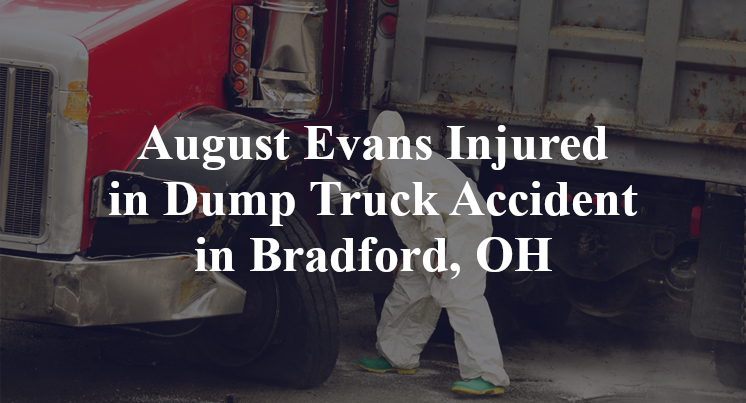August Evans Injured in Dump Truck Accident in Bradford, OH
Darke County, OH — July 17, 2025, August Evans was injured due to a dump truck accident at approximately 6:15 p.m. along U.S. Highway 36.
According to authorities, 22-year-old August Evans was traveling in an eastbound Chevrolet Equinox on U.S. 36 approaching the Greentree Road intersection behind a Kenworth dump truck when the accident took place.

The dump truck was allegedly slowing in preparation of making a left turn. Officials indicate that, for reasons yet to be confirmed, the Equinox collided with the rear-end of the dump truck. Evans reportedly sustained injuries of unknown severity due to the wreck, though they were described as to have been non-life-threatening. He was transported to a local medical facility by EMS in order to receive necessary treatment. No other injuries have been reported. Additional details pertaining to this incident are not available at this point in time. The investigation is currently ongoing.
Commentary by Attorney Michael Grossman
Rear-end collisions often lead people to assume the trailing driver is automatically at fault. But in my experience, crashes involving commercial trucks—especially slow-moving ones preparing to turn—are rarely that simple. The real question here is: Was the dump truck’s movement predictable and clearly communicated, or did something about it catch the other driver off guard?
Yes, drivers are generally expected to maintain enough distance to avoid hitting a vehicle ahead. But that expectation also depends on whether the vehicle in front gave proper signals and enough warning before slowing or stopping. If the dump truck slowed abruptly without adequate signaling—or if its brake lights or turn signals were obscured or malfunctioning—that could significantly alter how fault is assessed.
There’s also the matter of how visible the dump truck was. These trucks often carry dirt, gravel, or debris, and I’ve handled cases where poor lighting or dirty taillights made it nearly impossible to see brake signals. One poorly maintained vehicle can create conditions where even a cautious driver can’t react in time.
Another consideration is whether the turn itself was legal and safe. Was the truck making the turn from a proper position in the roadway? Was it forced to slow significantly because the turn was too tight, steep, or obstructed? Those are details that matter when evaluating whether the trailing driver had a reasonable opportunity to respond.
Until investigators collect data from both vehicles—like black box information showing speed and braking—it’s too early to know whether the Equinox driver was simply following too closely or whether the dump truck’s actions contributed to the crash.
Key Takeaways:
- Rear-end collisions are not always cut-and-dried; fault can depend on the lead vehicle’s signaling and behavior.
- Investigators should examine whether the dump truck slowed or turned without adequate warning or from an improper position.
- Visibility issues—such as blocked or dirty taillights—may have limited the trailing driver's ability to react.
- Black box data from both vehicles could clarify speeds, braking distances, and timing of actions before the crash.
- Determining fault requires a full investigation—not assumptions based on the type of collision alone.

“These are essential reads for anyone dealing with the aftermath of a truck wreck”– Attorney Cory Carlson